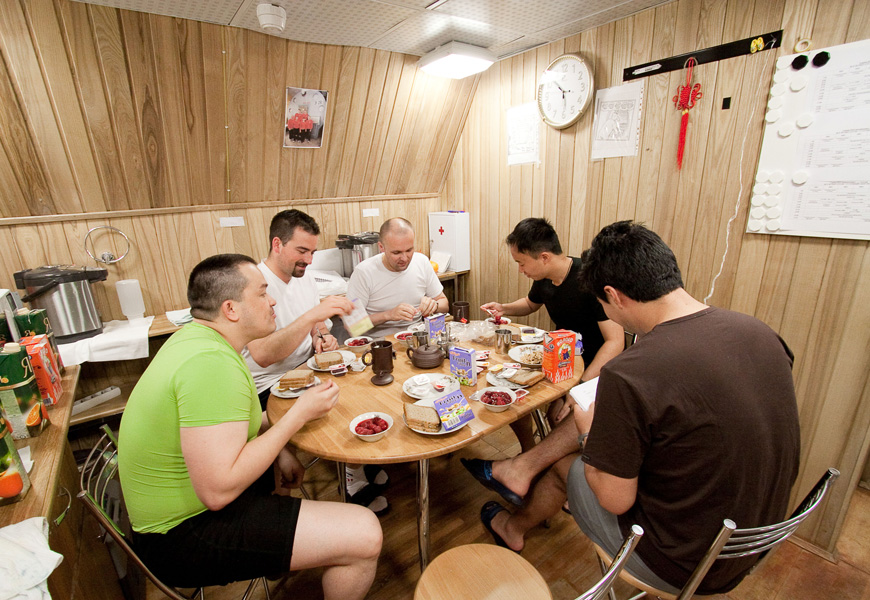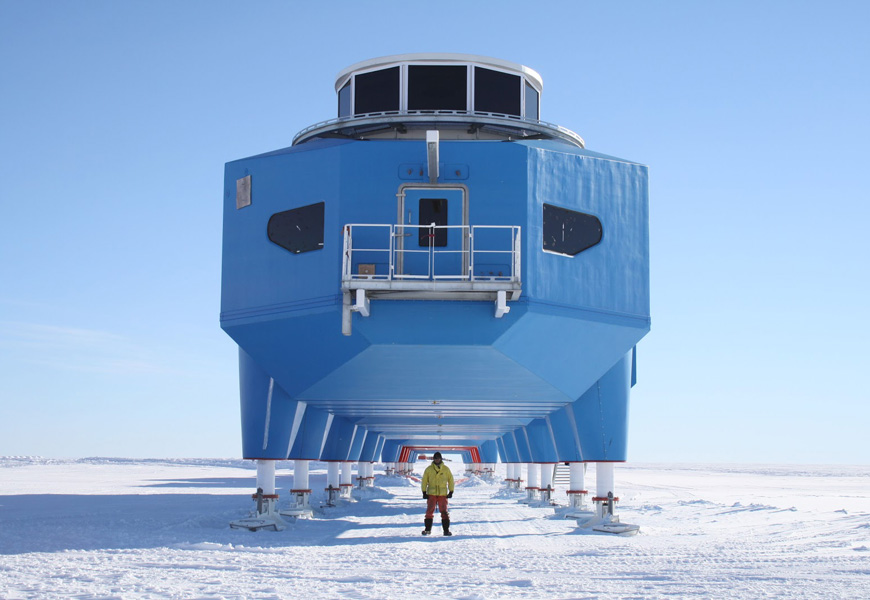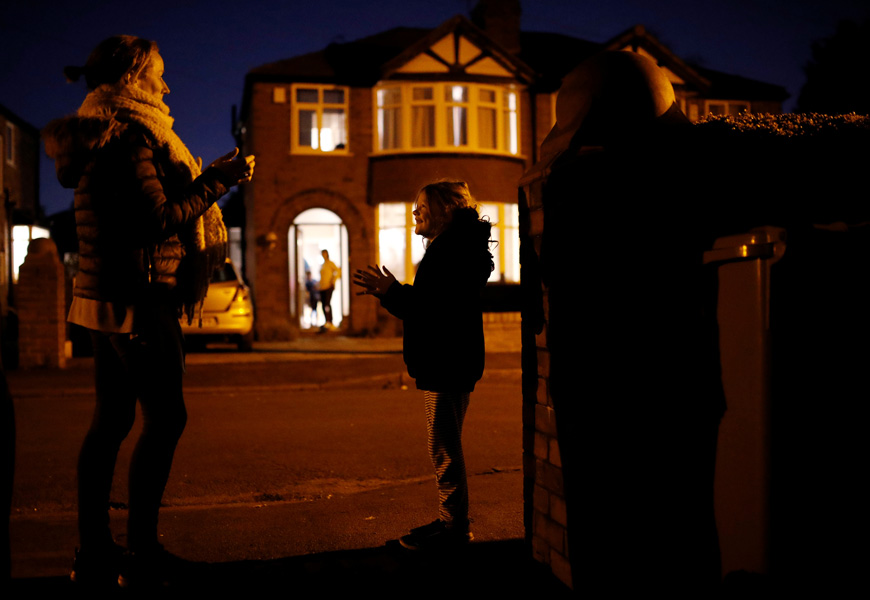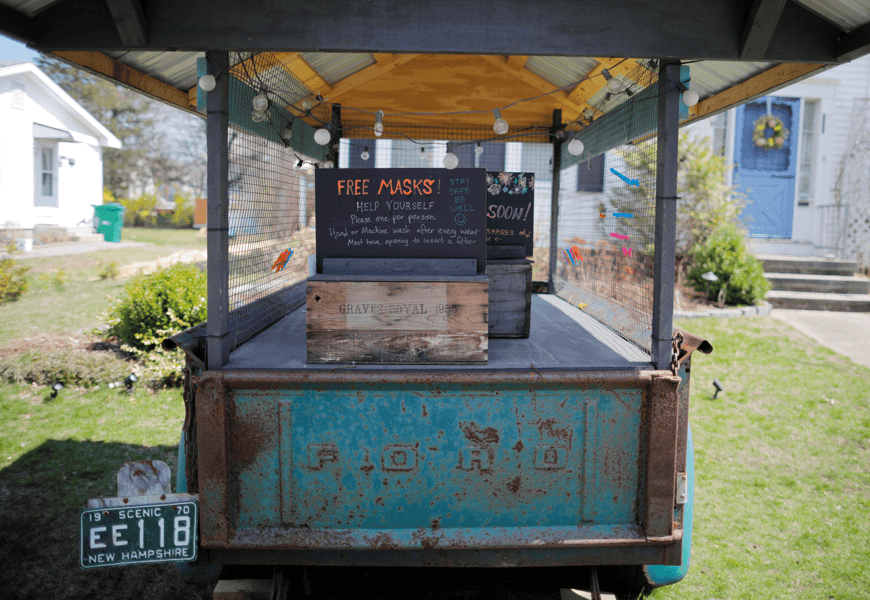For Peggy Whitson, what helped was a sense of purpose. Chris Hadfield advises focusing on the common threat and being aware of how your actions impinge on others. And John Rafferty says it’s crucial to shower and put on fresh clothes each day.
The sense of isolation that these people felt when doing their jobs — the first two are astronauts who served on the International Space Station and the third is a former US Navy submariner — was extreme. But millions of people around the world, cut off from friends and family and cooped up 24-7 alone or with a small core group, have been experiencing many of the same emotions and frustrations.
For policymakers, scientists and the public, the Covid-19 lockdowns are a journey into the unknown, with big questions about how they will play out. What are the likely impacts on people of social distancing? What could the long-term effects be on our collective mental health?
Scientists don’t have all the answers. But as this unplanned global experiment in staying apart from others (and in unnaturally close contact with a few) rolls on, they are urgently trying to track the results.
“Many years of psychological research has told us now that those experiences of social isolation, of loneliness, of social disconnection are a very strong risk factor for poor mental health, physical health problems and all-cause mortality,” says George Slavich, a psychoneuroimmunologist at the University of California, Los Angeles, who wrote an article on the benefits of social connections in the Annual Review of Clinical Psychology earlier this year.
“Social isolation is stressful for people because we’re essentially social animals. We got where we are in this beautiful world by bonding together in tribes, by cooperating and by working together.”
Feeling stuck together
People do not have to be entirely alone to suffer the effects of social isolation (although the damaging impacts such as stress and trauma caused by solitary confinement are well documented). The cliché that people can never feel more alone than in a crowd is true: Loneliness is not defined by an individual’s number of social contacts, but by the gap between actual and desired connections.
So while most of us might think of elderly people living alone as particularly lonely, the data don’t agree. A recent analysis of a huge 2018 survey, carried out by UK psychologists and the BBC, looked at 46,054 people aged 16 to 99 years, living across 237 countries, islands and territories. It found loneliness across the board, but more severe the younger someone was.
The same team is mobilizing to reexamine the issue on a global scale, because the lockdown provides a “natural experiment,” says Pamela Qualter, a psychologist at the University of Manchester, UK. “We talk about how social isolation and feelings of loneliness impact mental and physical health, but we can’t test that experimentally. We can’t put people in a room and isolate them for four or eight weeks. But we’re now in a situation where everybody is experiencing that.”
In cities all over Italy, people go to their balconies to sing, dance and play music to keep their spirits buoyed during social isolation.
CREDIT: ON DEMAND NEWS
There is some evidence that younger people are suffering more loneliness under coronavirus lockdown and social distancing measures. An ongoing survey of 2,221 people by the Mental Health Foundation, a UK charity, found a spike in reported loneliness after the lockdown began.
In March, shortly before lockdown started, 10 percent of UK adults said they had felt lonely. That rose to 24 percent by the beginning of April. The most affected group was 18-to-24-year-olds, with 44 percent saying they had felt lonely in the previous two weeks. Only 1 in 6 people over 55 said the same. Loneliness is a worry, the charity says, because it’s a risk factor for developing or worsening more severe mental health problems such as depression and anxiety.
Another concern is how being confined to home will strain relationships between friends and partners or parents and children. When the UK lockdown was announced, Jenny Harries, the government’s deputy chief medical officer, suggested that couples who live apart could “test the strength of their relationship” and move in together.
Research can help here. The strength of relationships between people stuck together in confined spaces is something that scientists have studied for decades — as a way to boost the performance of teams in isolated and extreme environments such as space missions. Typically, they monitor groups of individuals who volunteer to strand themselves for months at research bases over the freezing darkness of the Antarctic winter, or who work in isolated crews in submarines. Scientists also ask for volunteers to spend even longer periods of time sealed inside purpose-built facilities on the ground.
Mathias Basner, an associate professor in the University of Pennsylvania’s psychiatry department, worked on the longest of these: the Mars500 project, which studied the behavior of six men locked together for 520 days inside a mock spacecraft in a Moscow parking lot in 2010 to 2011.
Such studies, while not exact copies of what happens in space or in pandemic lockdown, can offer useful pointers for both. “It’s the same thing that many of us are experiencing, including myself,” Basner says. “NASA is always looking for Earth applications. But who would have guessed that their research into living in isolated, confined and extreme environments would be applicable to so many people on Earth?”
Results show — as would be expected — that groups working in such conditions tend to go through phases of tension and cohesion.
The timing of these, to an extent, can be predicted. Some psychologists talk about the “third quarter phenomenon,” in which performance of an isolated group tends to slump after the halfway point of a mission and then picks up near the end. (Unlike the present lockdown, of course, submariners, astronauts and Antarctic scientists know when they will be released.)
But on an individual level, it’s much harder to use such studies to judge who will react and how, because it depends on personal circumstances and experiences as well as the mix of personalities within the isolated group.

The crew of Mars500 eat breakfast together. A 520-day experiment that ran from June 2010 to November 2011, Mars500 was conducted in an isolation chamber in Moscow to simulate the cooped-up experiences a crew would face while working and living during a mission to Mars. This and other studies of groups in isolated conditions, such as people working on submarines or in Antarctica, have taught scientists a lot about psychological resilience and group dynamics under such circumstances.
CREDIT: ESA / MARS500 CREW
Basner says it’s vital during lockdown — perhaps ironically — that everyone has a place where they can be on their own. “Even when you’re isolated you sometimes need to get away from the people you are isolated with, because you just can’t take it anymore,” he says. Personal space helps people calm down and defuses the increased conflict that otherwise develops.
“The spacecraft we’re going to send to Mars is going to be tiny,” Basner says. “One thing we said, and this is very relevant for now, is that the astronauts need a private space. There needs to be a crew quarter, however small.”
His advice for all of us today? “You have to be more respectful of the others, and to try to avoid conflict situations by monitoring your own behavior. You have to be more lenient to others but also have to try to control yourself.”
Looking for peace in pods
Some studies have found that people’s response to the stress of isolation might vary according to their culture. Working for the European Space Agency, researchers in Hungary have analyzed weekly video diaries recorded by small groups of people who spent more than 200 days on Antarctic bases. They looked for key words, such as those that indicated negative emotions including anxiety, anger and sadness, spoken in videos made by 10 men and four women in 2013 at the French-Italian Concordia base. And they compared them with similar videos made by seven men and one woman who spent the winter of 2014 at the British Halley station, perched on an ice shelf in the Weddell Sea.
Among the French and Italians at Concordia, the researchers found lots of positive emotions at the start, which tailed off and were replaced by anger in the third quarter. But the British seemed to respond to the isolation without showing changes in mood or emotion. That might be because the more extreme location of Concordia made people stuck there more negative. Or it could be stereotypical British reserve — the desire to keep calm and carry on.
Older studies of national bases during winter seasons in Antarctica show similar cultural patterns: Americans became more tired and worried as time went on, Russians said that week after week of isolation made them feel less depressed and anxious, and Indians reported a significant decrease in anger. In general, people from national cultures and societies associated with individualism were less likely to seek support from colleagues, so their moods worsened over time.

A man stands in front of the Halley Research Station, operated by the British Antarctic Survey, in 2013. The station, first established in 1956, is situated on a floating ice shelf in Antarctica and has been rebuilt five times. Scientists have studied those working at Halley and an even more remote Antarctic station, Concordia, to understand the psychological effects of isolation.
CREDIT: FORGEMIND ARCHIMEDIA / FLICKR
Mission controllers are especially keen to work out what sorts of groups are best placed to get along. They have discovered to their cost that problems in an isolated group can often show as hostility to those outside the bubble. One such incident rocked the 1973 Skylab 4 flight, when tensions between ground crews and three astronauts who had spent more than a month in space resulted in 90 minutes of radio silence and an unscheduled break from work. (The exact circumstances are disputed. Some call it a mutiny; others claim it was all a misunderstanding.)
Being stuck in groups means that arguments and disputes are inevitable. A 2019 review of more than 72 studies of such isolated communities found that all had reported at least one conflict before they reached the halfway mark.
Tensions and conflicts can be triggered when splinter groups form, so psychologists are especially keen to identify individuals who have the right personalities to help bridge differences and smooth out problems before they become serious. Peacemakers and counselors are useful, but so are clowns, who can play the role of court jester and be willing to be the butt of jokes and pranks. On remote Antarctic bases, such a figure can help bridge traditional — but potentially damaging — divides between academic scientists and skilled tradespeople who serve as contractors.
What about families? Will they cope better in isolation because, in theory at least, couples have chosen to be together because they enjoy each other’s company? Ron Rogge, a clinical psychology professor at the University of Rochester, is trying to find out. He is recruiting parents of school-aged children to a weekly survey project that tracks participants’ mood and experiences over the lockdown period and beyond.
More than 1,000 parents have signed up so far (he wants 5,000 — learn more here). Rogge says it’s important to track how increased stress in parents can affect children. “The parents not doing well trickles down to how they interact with their kids,” he says. The kids could get stressed as well, and everyone would experience the family environment as a lot more chaotic.
Antidotes to anxiety
Other scientists are trying to track the impact on mental health conditions, such as depression and anxiety — and the risk of suicide.
In April, psychiatrists in the UK said that a possible increase in suicide risk during lockdown was among a number of mental health issues that needed to be urgently investigated. Their warning — echoed by colleagues in the US — followed survey results that showed large numbers of people in the UK, including many with existing mental health conditions, were anxious about the impact of prolonged social isolation.
“It’s not obvious what the mental health effects [of the ongoing pandemic] will be and I think that’s really critical,” says Matthew Hotopf, a psychiatrist at King’s College London. “There’s a lot of stuff circulating that says of course it’s going to impact self-harm, suicide, anxiety and depression, but we just don’t know.”
Among the questions the psychiatrists say must be addressed most urgently are strategies to communicate vital public health measures and change people’s behaviors without triggering distress, and to identify and share positive examples of how people are coping.
A good example of a coping mechanism is the regular and public display of collective appreciation shown by many neighbors and communities to healthcare workers. All around the world, often at an appointed hour in the evenings, people gather outside their homes, lean out their windows or step onto their balconies to clap, cheer or ring bells.

People in Manchester, England, emerge from their houses to clap for National Health Service workers on a Thursday night in late March. Expressions of unity and appreciation like this can help people keep their spirits up while cut off from loved ones.
CREDIT: REUTERS / PHIL NOBLE
“There is some evidence to suggest that expressions of gratitude can not only increase social bonding but also decrease feelings of loneliness,” says Julianne Holt-Lunstad, a psychologist at Brigham Young University, who wrote a 2018 article in the Annual Review of Psychology on why social relationships are good for physical health. Such events can make people feel connected and give them a sense of solidarity, she says. That’s important, because it could boost resilience.
People also tend to cope better when they have what’s called perceived support: the feeling that someone, somewhere, is there to help them if they should need it. Such support comes in three types: emotional, informational and tangible — the latter means that a person knows that someone can, for example, give them a lift to the hospital, or help look after children. “I can see that tangible support could to some extent be limited right now,” Holt-Lunstad says. “But I still do see some wonderful examples, like people sewing masks and leaving them on a porch if someone needs one, or willing to shop for those who can’t leave their home.”
Even people in space and deep in Antarctica can usually contact the outside world and talk to loved ones. But in the current situation, some people who live alone could find themselves communicating with people more often than usual, as friends and family check in on them.

In Keene, New Hampshire, free homemade masks are offered for those passing by.
CREDIT: REUTERS / BRIAN SNYDER
But though technology can help people stay in touch, Holt-Lunstad says it’s not clear whether people talking to each other remotely, even while seeing each other on video screens, offers the same emotional support as face-to-face meetings. “We have a lot less evidence in terms of the equivalencies of this,” she says. “I hope the current situation will really highlight some of the strengths and limitations of these technologies. I suspect they may be a good supplement but not a replacement for face-to-face interaction.”
Some research, for example, finds that women holding conversations show fewer emotional cues — they laugh, smile, gesture and nod significantly less — when they communicate using video screens than when they meet face to face. But video chats did come with more cues than talks on the phone.
Other technologies are bringing people together in ways that wouldn’t otherwise be possible. Musician Tim Burgess, lead singer of the UK band The Charlatans, organizes daily “listening parties” in which people across the world listen to an album at the same time and share thoughts and memories on Twitter, often with the artists chipping in. “That’s lovely. It gives a sense of shared purpose and says that we’re in this together,” Holt-Lunstad says. “It would not only mitigate feelings of distress but also strengthen that sense of connection.”
That’s important, says Basner. Astronauts and others in extreme isolation are often brought together by the sense that they have a common purpose — to survive the threat to life posed by the hostile circumstances. And the same can apply right now for the rest of us.
“We have a goal that we are all fighting for as a society right now, to get over this period and get rid of that virus so we can go back to our normal lives,” Basner says. “If we all have that in our heads as our common goal, then it is much easier to endure the stress associated with our confinement and isolation.”




